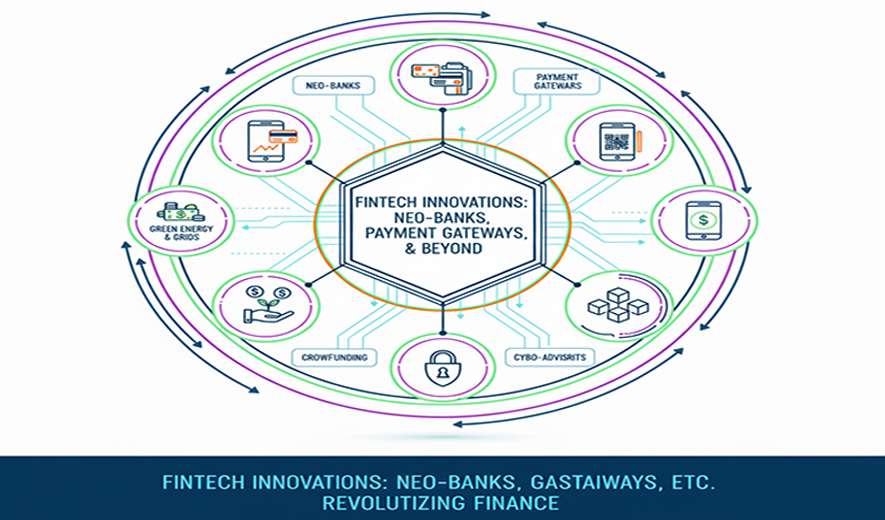
Fintech Innovations: Neo-banks, Payment Gateways, etc.
Fintech innovations like neo-banks, advanced payment gateways, and lending platforms are leveraging AI, big data, and blockchain to offer faster, more accessible, and personalized financial services than traditional institutions. This digital transformation is expanding financial inclusion for underserved populations and is appealing to younger, tech-savvy users.
Neo-banks: The digital-first revolution
Neo-banks are fintech companies that operate exclusively online, without physical branches. Their business model, which is highly efficient and data-driven, allows them to provide streamlined services and lower costs.
Payment gateways: Faster, smarter, and more integrated
Payment gateways are evolving beyond simple transaction processing to become central to digital commerce. They enable businesses to accept payments securely and efficiently across various channels.
Key innovations:
- AI-driven fraud prevention: AI and machine learning are used to detect and prevent fraudulent activities in real-time by analyzing transaction patterns.
- Real-time payments: Systems like FedNow in the U.S. and UPI in India are enabling instant, account-to-account (A2A) transfers, which improves cash flow for businesses and speeds up payments for consumers.
- Embedded payments: Payment gateways are integrated directly into third-party platforms, such as e-commerce websites and mobile apps, minimizing friction for users.
- Multi-currency and crypto support: Gateways now support a wider range of payment options, including cryptocurrency and multiple international currencies, to facilitate global e-commerce.
- Buy Now, Pay Later (BNPL): Gateways are increasingly offering BNPL services, allowing customers to pay in installments and boosting conversion rates for merchants.
Fintech lending: Accessible and data-driven
Fintech lending uses digital platforms to streamline the loan process, offering faster decisions and more flexible options than traditional banks.
Key innovations:
- Alternative credit scoring: Lenders use big data analytics to assess a borrower's creditworthiness based on non-traditional data points, such as rental history or utility payments. This expands credit access to underserved populations with thin credit files.
- Automated underwriting: AI and machine learning algorithms automate the loan application and approval process, leading to faster decisions and reduced manual errors.
- Peer-to-peer (P2P) lending: Platforms connect borrowers directly with individual investors, reducing costs and providing an alternative to traditional bank loans.
- Embedded finance: Lending solutions are integrated directly into non-financial platforms, such as retail checkouts, allowing for point-of-sale financing.
